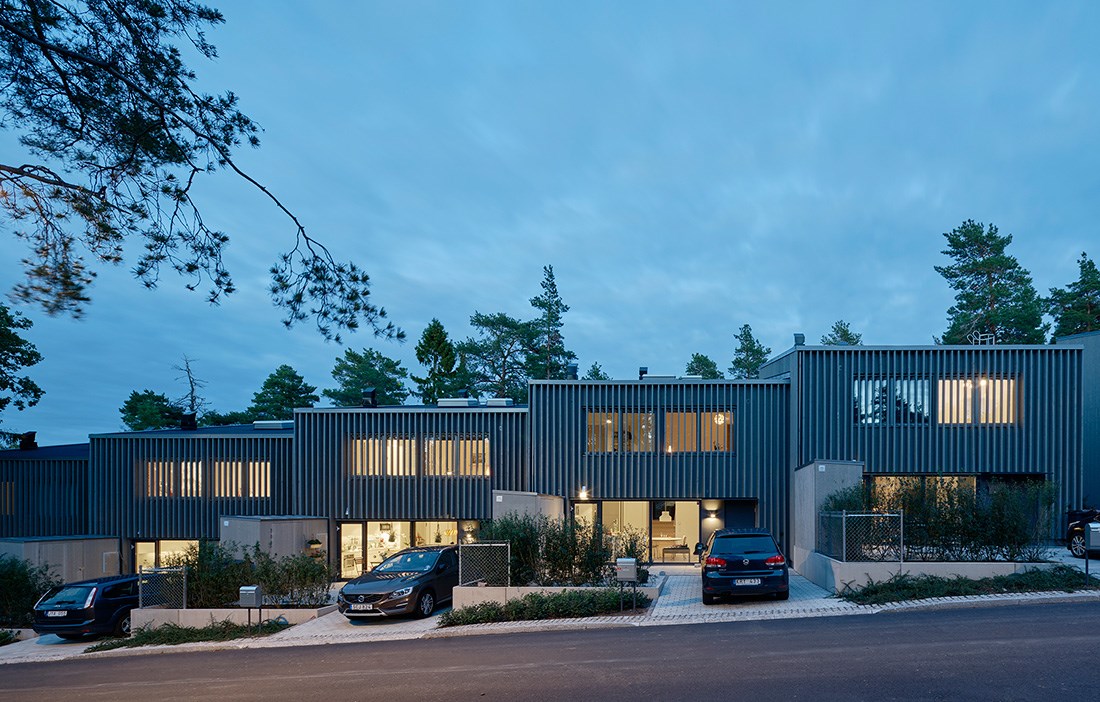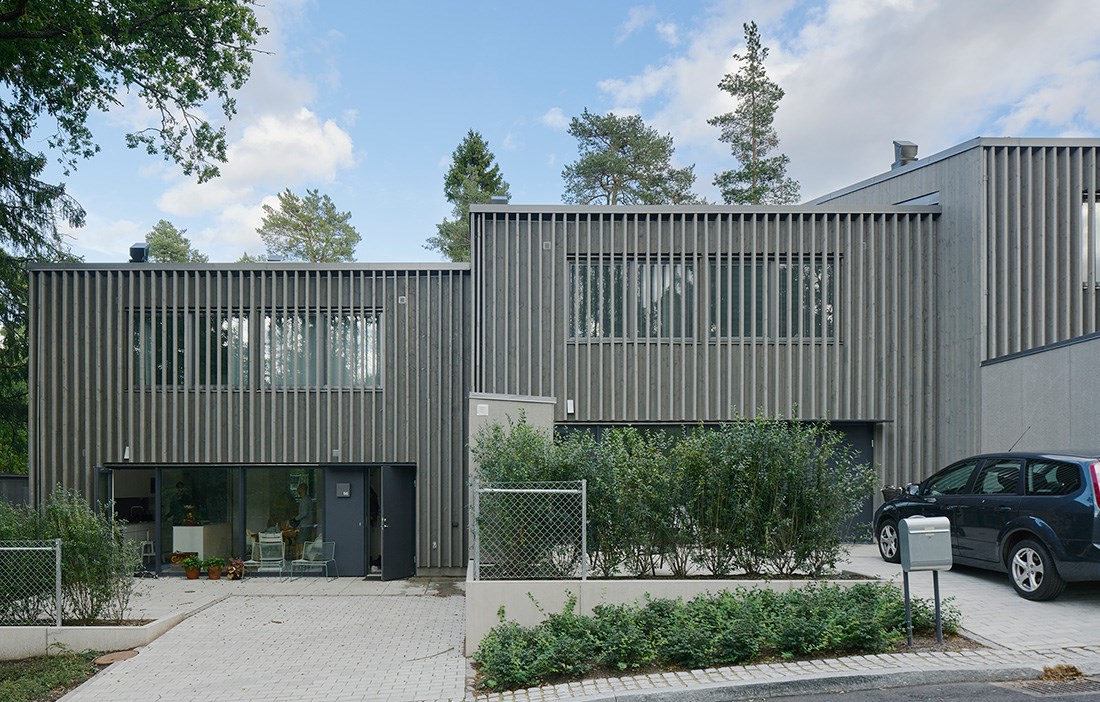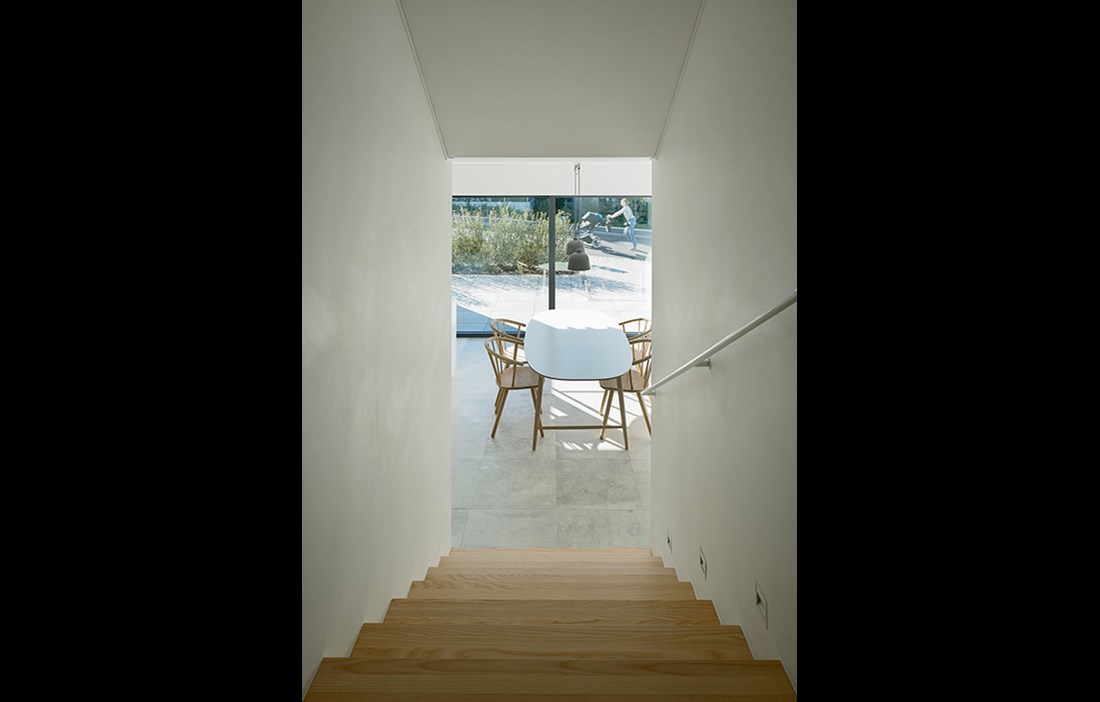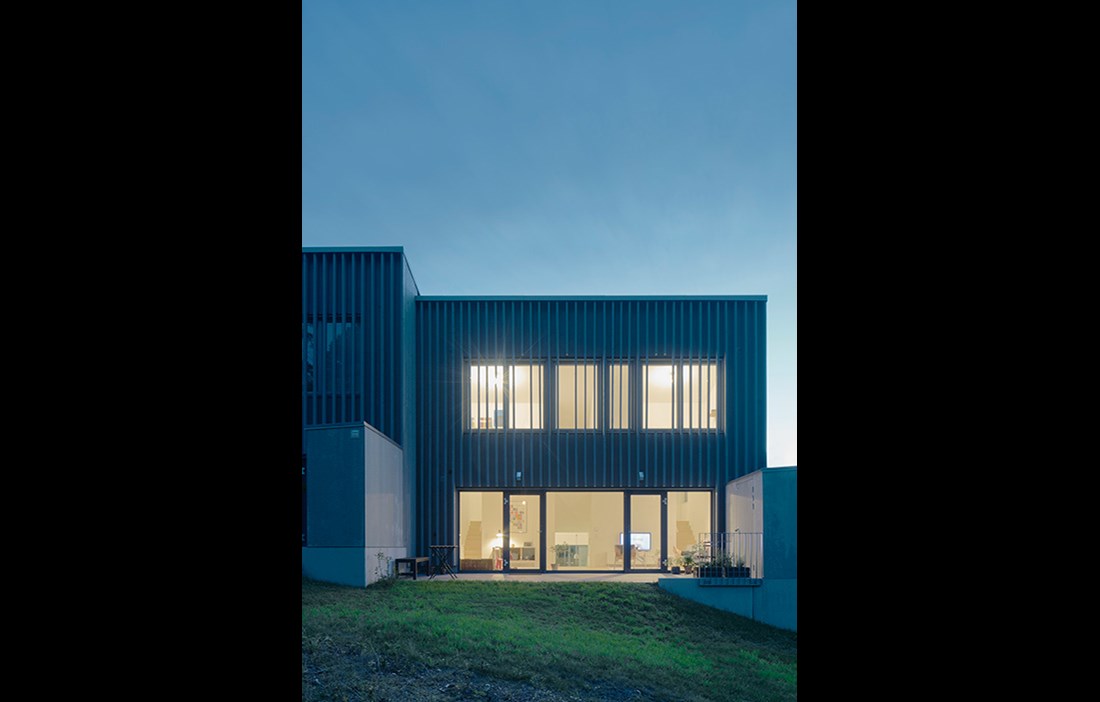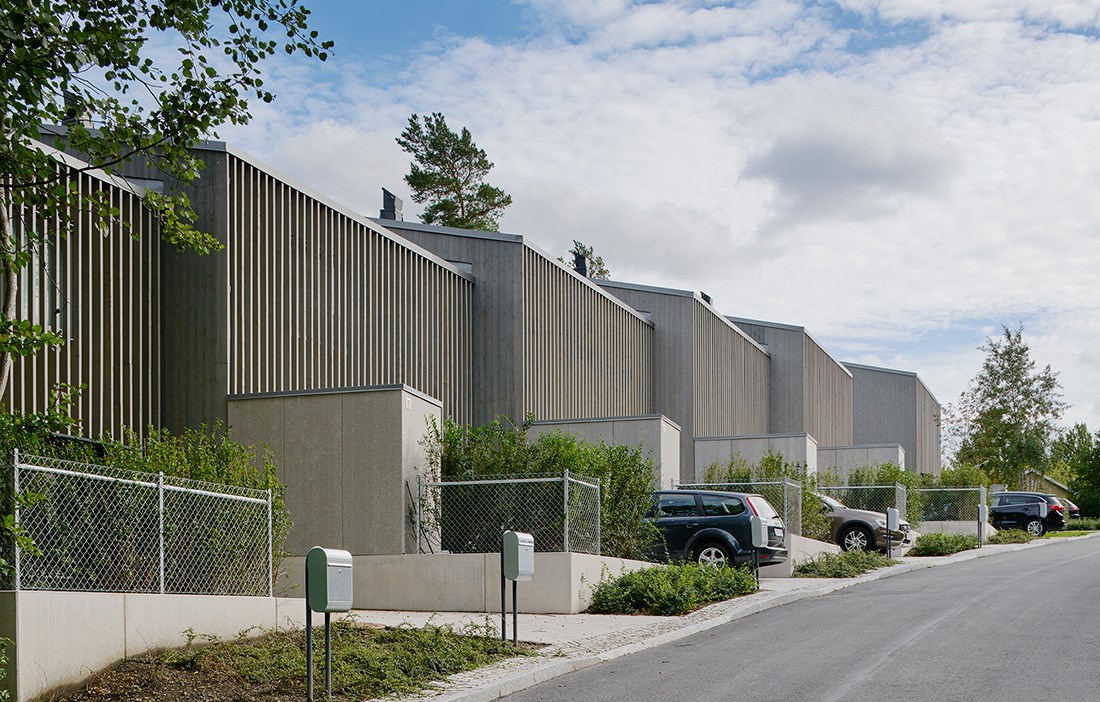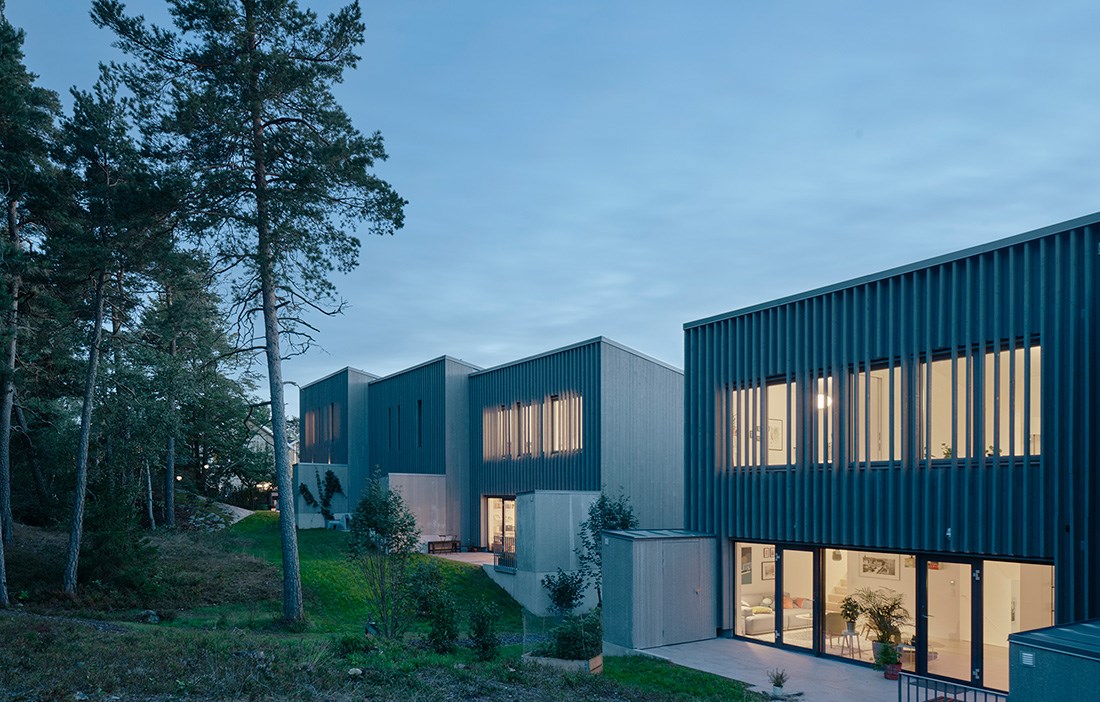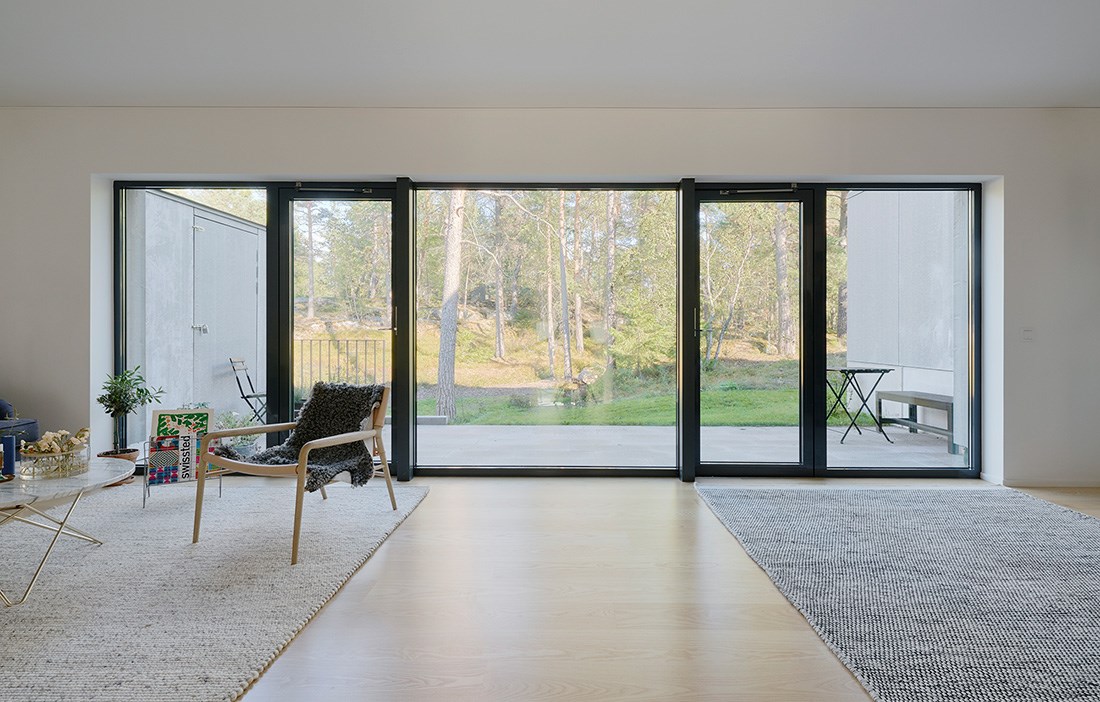Now there are 12 large terraced houses on the site, each measuring 147 square metres and cleverly adapted to the hilly forest terrain. The houses are made up of four half-storeys linked by four staircases between the different levels. The layout is innovative and playful, and the large expanses of glass let in both light and the natural surroundings.
“What captivated us was the juxtaposition of an urban street and the nature reserve, which we saw as an exceptional quality. It has been a guiding thought that we have kept in mind throughout the journey,” says Tomas Lauri of architectural practice Arklab, which developed the project in partnership with Erik Wallin Bygg.
Tomas Lauri describes a kind of social layering in the homes, where you move from the social lower parts upwards to the more private spaces. The lowest level houses the entrance and the kitchen, with large sections of sliding glazing overlooking the street. Then you continue via a first staircase up to the living room, whose windows this time face the forest. And then finally, the bedrooms on the two upper half-storeys can be reached by narrower stairs on each side of the room.
“The staircase arrangement is a really key feature of the house. The numerous stairs help to create a sense of movement, and of course the children who live here think it is really cool to run up and down them.”
The higher up the building you go, the less transparent the façade becomes. At the very top, in the bedrooms, the windows are partially obscured by the vertical façade battens, which Tomas Lauri says are no more unusual than having a curtain.
“The battens are a good way to ensure a certain level of privacy, while still having a clear view from the inside out. They are also an expressive example of the simplicity that comes from building in wood. We held a workshop with the developer, where we physically used hammers and nails to try out the spacing and depth of the battens in full scale, in order to get the perfect look.”
Although the terraced houses are built around prefabricated wooden frames, the project involved a high degree of customisation. The architects have avoided all the obvious signs of prefabricated construction, with the vertical pattern of grey stained pine cladding fitted separately on site, for example.
“We had an emotional, almost poetic relationship with the site, which is surrounded by tall pines and rugged rocks, right on the border with the buzz of the city. Wood was therefore an obvious material choice for us right from the outset. Using prefabricated wooden frames proved to be extremely efficient and fitted in well with the budget for the project.”
The big challenge was to adapt the houses to the existing natural conditions. The terraces are therefore not arranged like a straight block, but instead follow the curvature of the street, which has required many meetings and adaptations. Care has also been taken to retain valuable trees near the buildings. The focus has always been on the forest and the street and building homes that bring added value to the site.
“When we look back at the digital renderings from the planning phase and compare them with what was actually built, there is very little difference. A lot of that comes down to the high ambitions that both we and developer Erik Wallin had when we began the project and the fact that we worked hard to achieve them together,” concludes Tomas Lauri.
Text Katarina Brandt

